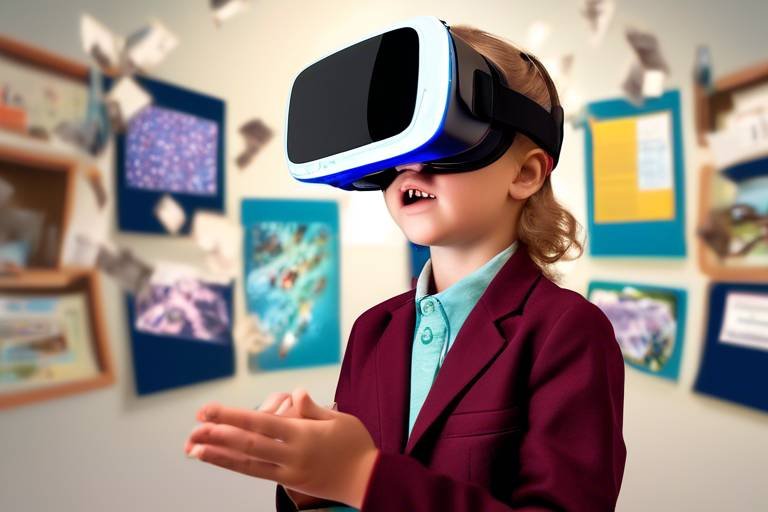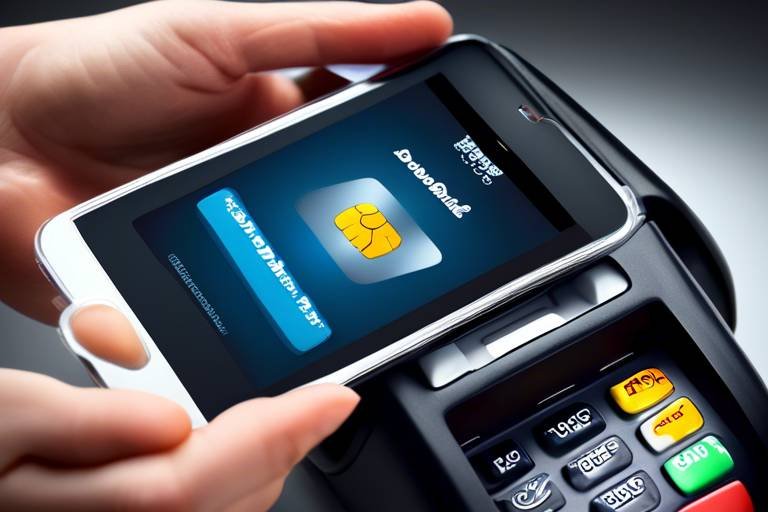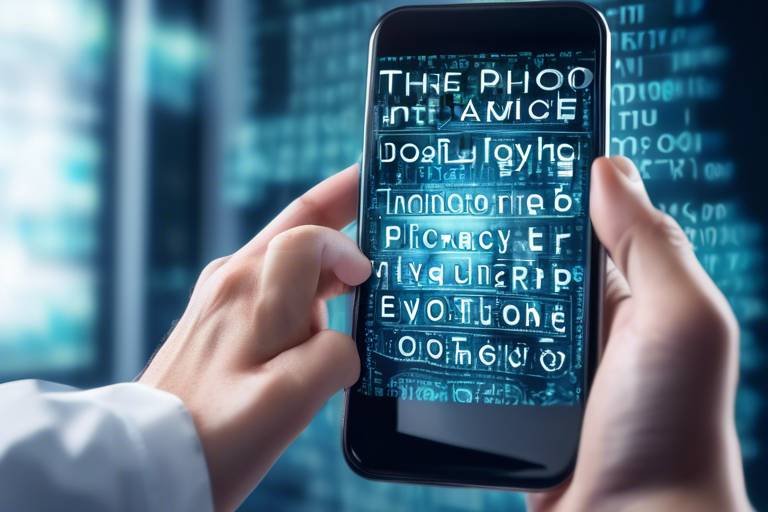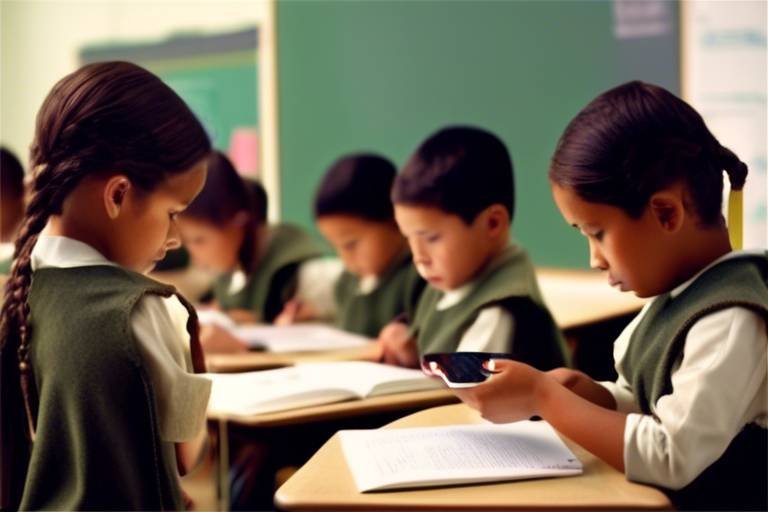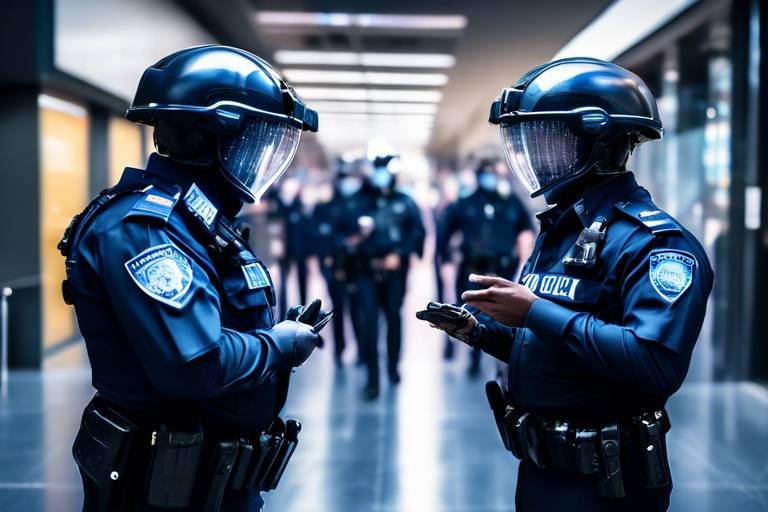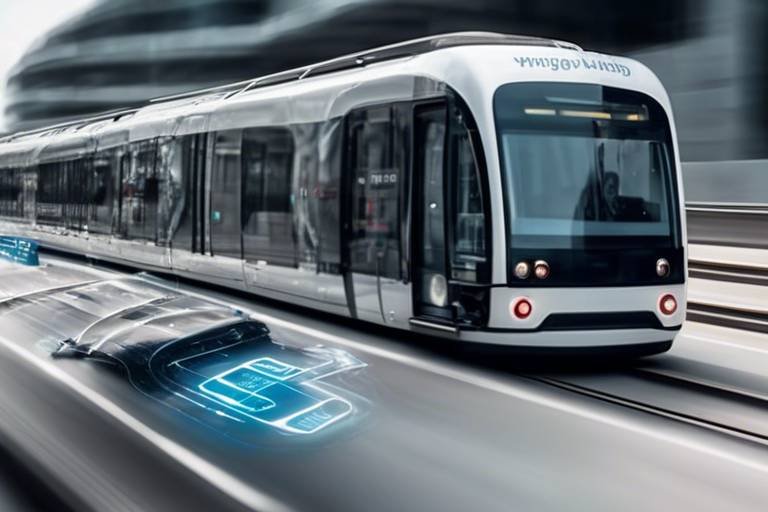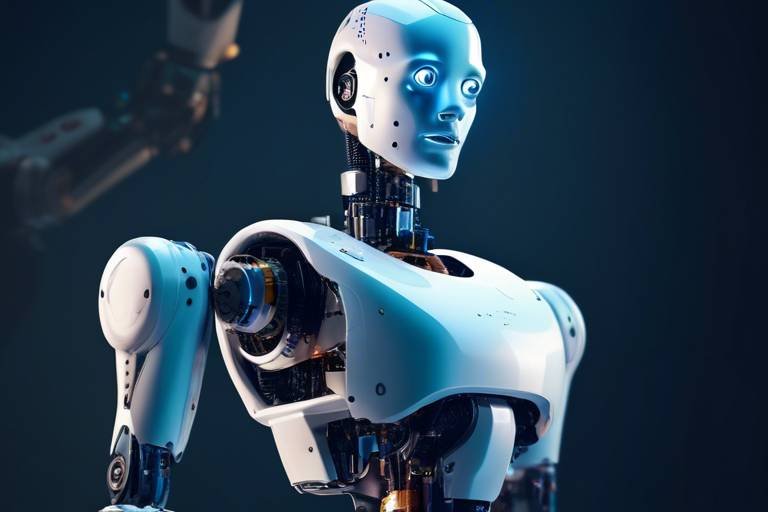How Virtual Reality is Improving Learning Outcomes
Imagine stepping into a world where you can explore ancient civilizations, conduct complex scientific experiments, or even travel through the human body—all without leaving your classroom. This is the transformative power of Virtual Reality (VR) in education. As technology advances, VR is becoming a game-changer, offering students immersive experiences that traditional learning methods simply cannot provide. But how exactly is VR improving learning outcomes? Let’s dive into this fascinating topic!
First off, one of the most significant advantages of VR in education is its ability to increase student engagement. When learners are actively participating in their education through immersive experiences, they are more likely to retain information. Think about it: would you remember a history lesson more vividly if you could walk through a virtual replica of ancient Rome, or if you just read about it in a textbook? The answer is clear. VR not only makes learning fun but also creates lasting memories that enhance knowledge retention.
Moreover, VR caters to diverse learning styles. Some students are visual learners, while others may grasp concepts better through hands-on experiences. With VR, educators can create tailored learning environments that address these different preferences. For instance, a student who struggles with abstract mathematical concepts can visualize them through interactive simulations, making the material more relatable and easier to understand. This personalized approach can lead to a deeper understanding of the subject matter.
Another key factor is the ability of VR to provide real-world applications. Students can engage in scenarios that closely mimic real-life situations, allowing them to apply their knowledge practically. For example, medical students can practice surgeries in a virtual operating room, gaining valuable experience without the risks associated with live patients. This hands-on practice not only boosts confidence but also prepares students for their future careers.
As we explore the future of education, it's clear that VR has the potential to revolutionize the way we teach and learn. With ongoing advancements in technology, we can expect even more innovative applications of VR in the classroom. Imagine a world where students can collaborate with peers across the globe in a shared virtual space, or where educators can easily access a vast library of immersive learning materials. The possibilities are endless!
Virtual reality offers numerous advantages in educational settings, including:
- Increased Engagement: Students are more involved and excited about learning.
- Enhanced Retention: Immersive experiences help students remember information longer.
- Diverse Learning Styles: VR caters to various ways of learning, making education more inclusive.
- Real-World Applications: Students can practice skills in a safe, controlled environment.
From science to history, VR is being utilized in a multitude of subjects, providing students with hands-on experiences that deepen their understanding and make complex concepts more accessible and relatable. In science classes, for instance, students can explore intricate systems, conduct virtual experiments, and visualize phenomena that would be impossible or unsafe to experience in a traditional classroom setting.
Virtually any subject can benefit from VR, including science, history, language arts, and even physical education. The immersive nature of VR makes it an excellent tool for visualizing complex concepts across disciplines.
While the initial investment in VR technology can be high, many schools are finding ways to incorporate it through grants, partnerships, and shared resources. The long-term benefits often outweigh the costs.
Most VR systems are designed to be user-friendly, but some basic training for both students and educators can enhance the experience and ensure effective use of the technology.

The Benefits of VR in Education
Virtual reality (VR) is not just a buzzword; it's a transformative tool that's reshaping the educational landscape. Imagine stepping into a world where you can explore ancient civilizations, conduct scientific experiments, or even travel through the human body—all from the comfort of your classroom. This is the power of VR in education, and it comes with a plethora of benefits that can significantly enhance the learning experience.
One of the most notable advantages of VR is its ability to increase engagement. Traditional teaching methods often struggle to captivate students' attention, especially in a world filled with distractions. However, VR creates immersive environments that make learning feel like an adventure. Students are not just passive recipients of information; they become active participants in their educational journey. This level of engagement leads to a deeper understanding of the material being taught.
Additionally, VR enhances the retention of information. Studies have shown that when students are immersed in a virtual environment, they are more likely to remember what they learn. This is because VR appeals to multiple senses, allowing learners to see, hear, and even interact with the content. For example, instead of reading about the water cycle in a textbook, students can experience it firsthand by virtually walking through a rainstorm or observing evaporation in action. This multi-sensory approach solidifies knowledge in a way that traditional methods often cannot.
Furthermore, VR caters to diverse learning styles. Every student has a unique way of processing information—some are visual learners, while others may be more auditory or kinesthetic. VR provides a flexible platform that can accommodate these differences. For instance, visual learners can benefit from stunning graphics and simulations, while kinesthetic learners can engage in hands-on activities within a virtual lab. This adaptability ensures that all students have the opportunity to thrive in their educational pursuits.
To illustrate the benefits of VR in education, consider the following table:
| Benefit | Description |
|---|---|
| Increased Engagement | Students actively participate in their learning experience, making it more enjoyable and effective. |
| Enhanced Retention | Immersive experiences lead to better memory retention and understanding of complex concepts. |
| Diverse Learning Styles | Accommodates different types of learners through visual, auditory, and kinesthetic interactions. |
In summary, the integration of VR in education is revolutionizing how students learn and interact with information. By fostering engagement, improving retention, and catering to various learning styles, VR is paving the way for a more dynamic and effective educational experience. As we continue to explore the potential of this technology, it's clear that the future of learning is not just in textbooks but in immersive, interactive environments that inspire curiosity and creativity.

Applications of VR in Various Subjects
Virtual reality (VR) is revolutionizing the way we approach education across various disciplines. By providing immersive experiences, VR helps students grasp complex concepts that might otherwise seem daunting. Imagine walking through the ancient streets of Rome or conducting a chemistry experiment without the fear of hazardous materials. These experiences not only make learning more engaging but also cater to different learning styles, allowing students to explore subjects in ways that resonate with them.
In the realm of science education, for instance, VR is a game changer. Students can dive into the microscopic world, observing cells and bacteria up close, or travel through the human body to see how systems interact. This hands-on approach makes the learning process more tangible and memorable. Virtual labs and simulations are particularly beneficial, enabling students to practice scientific methods in a controlled environment. They can experiment with variables, observe outcomes, and receive immediate feedback, fostering a deeper understanding of scientific principles.
When it comes to history and social studies, VR transports students back in time. Imagine standing in the middle of a battlefield during a historical event or walking through the Great Wall of China. Such experiences allow learners to witness history firsthand, making it more relevant and relatable. By immersing students in historical contexts, VR enhances their understanding of events, cultures, and societal changes, turning abstract concepts into vivid realities.
Furthermore, VR's applications extend to language learning. Students can practice their language skills in virtual environments that simulate real-life situations, such as ordering food in a restaurant or conversing with native speakers. This immersive practice not only boosts confidence but also improves pronunciation and comprehension, making language acquisition more effective.
As we look towards the future, the possibilities for VR in education seem endless. Imagine virtual field trips that take students to the depths of the ocean or the peaks of the Himalayas, providing experiences that would be impossible in a traditional classroom. With VR, learning becomes an adventure, sparking curiosity and a passion for discovery.
In summary, the applications of VR in various subjects are vast and varied. As educators embrace this technology, they can create learning environments that are not only informative but also exhilarating. The challenge lies in ensuring that all students have access to these innovative tools, but the potential for enhanced learning outcomes is truly exciting.
- What subjects can benefit from VR? VR can enhance learning in subjects like science, history, language arts, and even mathematics.
- Is VR technology expensive? Yes, the initial investment in VR equipment can be high, but many institutions find that the long-term benefits outweigh the costs.
- How does VR cater to different learning styles? VR provides visual, auditory, and kinesthetic learning opportunities, allowing students to engage with material in ways that suit their preferences.
- Can VR be used for remote learning? Absolutely! VR can create immersive experiences for remote learners, bridging the gap between traditional and online education.

VR in Science Education
Imagine stepping into a world where the complexities of science unfold right before your eyes, where you can manipulate molecules or witness a chemical reaction without the fear of a lab accident. This is the magic of Virtual Reality (VR) in science education. By immersing students in interactive environments, VR breaks down the barriers of traditional learning, allowing them to experience concepts that are often too abstract or dangerous to engage with in a typical classroom setting.
For instance, consider a student learning about the human body. Instead of just reading about the circulatory system in a textbook, they can don a VR headset and explore a 3D model of the heart, seeing blood flow through arteries and veins in real-time. This kind of interactive learning is not just engaging; it significantly enhances understanding and retention of complex information.
Moreover, VR can simulate real-world scientific scenarios that students might not otherwise have the chance to experience. For example, they can conduct virtual experiments in a controlled environment, where they can manipulate variables and observe outcomes without the risks associated with real-life experiments. This hands-on approach fosters critical thinking and problem-solving skills, as students learn to hypothesize, test, and analyze results in a safe space.
In addition to traditional subjects, VR opens doors to exploring cutting-edge fields like genetics and astrophysics. Students can embark on virtual field trips to laboratories or even outer space, gaining insights that textbooks simply can't provide. This immersive experience not only ignites curiosity but also encourages a passion for science that can inspire future careers in STEM fields.
To illustrate the impact of VR in science education, let's take a look at a comparison of traditional learning methods versus VR-enhanced learning:
| Aspect | Traditional Learning | VR Learning |
|---|---|---|
| Engagement Level | Moderate | High |
| Retention of Information | Often Low | Enhanced |
| Practical Experience | Limited | Extensive |
| Accessibility to Complex Concepts | Difficult | Accessible |
As we can see from the table, the benefits of VR in science education are substantial. However, it’s essential to recognize that while VR offers exciting opportunities, it also requires careful implementation and support from educators. The integration of VR technology into the classroom must be accompanied by proper training and resources to ensure that both teachers and students can take full advantage of these innovative tools.
In conclusion, as we embrace the future of education, it's clear that Virtual Reality is not just a passing trend; it is a transformative force that has the potential to revolutionize how we teach and learn science. By creating immersive experiences that captivate students' imaginations, VR is paving the way for a new era of education where learning is not just about memorizing facts but about experiencing knowledge.
- What is Virtual Reality in education?
Virtual Reality in education refers to the use of VR technology to create immersive learning experiences that enhance understanding and engagement in various subjects. - How does VR improve learning outcomes?
VR improves learning outcomes by increasing engagement, enhancing retention of information, and providing hands-on experiences that make complex concepts more accessible. - Are there any challenges to implementing VR in schools?
Yes, challenges include the high costs of equipment, the need for technical training for educators, and potential accessibility issues for students. - What subjects can benefit from VR?
Subjects like science, history, and social studies can greatly benefit from VR, as it allows for immersive experiences that deepen understanding.

Virtual Labs and Simulations
Virtual labs and simulations are revolutionizing the way students engage with scientific concepts. Imagine stepping into a lab where you can conduct experiments without the fear of accidents or the constraints of physical resources. This is the promise of virtual labs, where students can manipulate variables, observe reactions, and analyze results in a completely safe environment. These immersive experiences not only enhance understanding but also foster a sense of curiosity and exploration.
One of the key advantages of virtual labs is the ability to provide immediate feedback. In a traditional lab setting, students might wait days to receive results from their experiments. However, with virtual simulations, they can see the outcomes of their actions in real-time, allowing them to adjust their methods and hypotheses on the fly. This instant feedback loop encourages a growth mindset, where students feel empowered to experiment and learn from their mistakes.
Moreover, virtual labs cater to various learning styles. Visual learners benefit from the dynamic graphics that illustrate complex processes, while kinesthetic learners can interact with the simulations to grasp concepts more effectively. For instance, a student struggling with the concept of chemical reactions can use a virtual lab to mix different substances and observe the results without the constraints of a physical lab. This hands-on approach makes learning more engaging and relatable.
Another exciting aspect of virtual labs is their accessibility. Students from different backgrounds and locations can access high-quality educational resources that might otherwise be unavailable to them. This democratization of education is crucial in bridging the gap between different socioeconomic groups. By providing equal access to virtual labs, we can ensure that every student has the opportunity to explore and excel in the sciences.
In summary, virtual labs and simulations are not just a trend; they represent a significant shift in educational practices. By offering safe, engaging, and accessible learning experiences, they prepare students for real-world scientific challenges. As these technologies continue to evolve, we can expect even more innovative ways to enhance learning outcomes in science education.
- What are virtual labs? Virtual labs are digital platforms that allow students to conduct experiments and simulations in a safe and controlled environment.
- How do virtual labs enhance learning? They provide immediate feedback, cater to different learning styles, and allow for safe experimentation, making complex concepts more understandable.
- Are virtual labs accessible to all students? Yes, virtual labs can be accessed online, making them available to students regardless of their location or resources.
- Can virtual labs replace traditional labs? While they offer many benefits, virtual labs are best used as a complement to traditional labs, providing additional learning opportunities.

Exploring the Universe
Imagine standing on the surface of Mars, gazing at the stunning landscape while feeling the thrill of discovery wash over you. Virtual reality (VR) makes this dream a reality for students, allowing them to embark on extraordinary journeys through space without ever leaving the classroom. With VR technology, learners can explore the cosmos in ways that were previously unimaginable, igniting their curiosity and passion for astronomy and space sciences.
One of the most exciting aspects of using VR to explore the universe is the ability to experience realistic simulations of celestial phenomena. Students can witness the birth of stars, the behavior of black holes, or even the intricate dance of planets in our solar system. This immersive experience not only enhances their understanding of complex scientific concepts but also makes learning more enjoyable and engaging. Imagine being able to see a supernova explosion up close or navigate through the rings of Saturn—all while in a controlled and safe environment!
Moreover, VR allows for interactive learning, where students can actively participate in their education. For example, they can manipulate virtual objects in space, such as adjusting the orbits of planets or analyzing the composition of distant stars. This hands-on approach fosters a deeper understanding of the material and encourages critical thinking skills. The ability to visualize and interact with the universe transforms abstract concepts into tangible experiences, making it easier for students to grasp challenging ideas.
To further illustrate the impact of VR in space exploration, consider the following table that highlights key benefits:
| Benefit | Description |
|---|---|
| Immersive Experience | Students can feel as if they are truly in space, enhancing engagement. |
| Interactive Learning | Allows for hands-on manipulation of virtual celestial objects. |
| Safe Exploration | Students can explore dangerous or unreachable areas without risk. |
| Enhanced Understanding | Complex astronomical concepts become more accessible and relatable. |
As we look to the future, the possibilities for VR in education continue to expand. With advancements in technology, students may soon have access to even more sophisticated simulations that provide a deeper dive into the mysteries of the universe. Imagine virtual field trips to exoplanets or interactive lessons on the life cycles of stars! The potential is limitless and exciting.
In conclusion, exploring the universe through virtual reality not only captivates students' imaginations but also equips them with the knowledge and skills necessary for a future in science and technology. By making the cosmos accessible, VR is paving the way for the next generation of astronomers, scientists, and explorers.
- What is virtual reality? - Virtual reality is a simulated experience that can be similar to or completely different from the real world, often using headsets and other equipment to create immersive environments.
- How does VR improve learning outcomes? - VR enhances engagement, retention, and understanding by providing immersive and interactive experiences that cater to various learning styles.
- Are there any downsides to using VR in education? - Yes, challenges include high costs, the need for technical training, and accessibility issues that must be addressed for effective implementation.
- What subjects can benefit from VR? - VR can be applied across various subjects, including science, history, mathematics, and the arts, providing unique learning experiences in each area.

VR in History and Social Studies
Imagine stepping into the shoes of a Roman soldier, feeling the heat of the sun on your face as you march towards the Colosseum, or standing in the bustling streets of ancient Athens, listening to the debates of philosophers. Virtual reality (VR) makes these experiences possible, transforming the way history and social studies are taught. Instead of merely reading about historical events from a textbook, students can now immerse themselves in the past, gaining a deeper understanding of the context and significance of pivotal moments in history.
One of the most compelling aspects of VR in history education is its ability to create an emotional connection to the material. When students can visualize and experience events like the signing of the Declaration of Independence or the fall of the Berlin Wall, they are more likely to remember and engage with the content. This immersive experience can lead to enhanced retention of information, as students are not just passive recipients of knowledge but active participants in the learning process.
Moreover, VR allows educators to bring diverse perspectives into the classroom. For example, students can explore different cultures, traditions, and historical narratives that may not be covered in a standard curriculum. This exposure fosters empathy and understanding, as learners can see the world through the eyes of others, making history more relatable and relevant to their lives today. They can participate in virtual reenactments, visit significant historical sites, and even interact with historical figures, making the learning experience dynamic and unforgettable.
To illustrate the potential applications of VR in history and social studies, consider the following examples:
- Virtual Field Trips: Students can embark on virtual tours of ancient civilizations, such as the pyramids of Egypt or the ruins of Pompeii, allowing them to explore and analyze these sites without leaving the classroom.
- Interactive Timelines: VR can create interactive timelines where students can navigate through different eras, understanding the cause and effect of historical events in a visually engaging way.
- Cultural Simulations: Students can participate in simulations of significant events, such as the civil rights movement, allowing them to experience the challenges and triumphs of those who fought for justice.
In conclusion, the integration of VR in history and social studies not only enhances engagement but also promotes a more profound understanding of the complexities of human experiences across time. As technology continues to evolve, the potential for VR to revolutionize education in these fields is immense, paving the way for a future where learning is not only informative but also transformative.
Q: How does VR enhance learning in history and social studies?
A: VR enhances learning by providing immersive experiences that allow students to engage with historical events and cultures in a way that traditional textbooks cannot. This engagement leads to better retention and understanding of the material.
Q: Are there specific VR programs designed for history education?
A: Yes, there are several VR programs and applications specifically designed for history education, offering virtual field trips, interactive timelines, and cultural simulations that enrich the learning experience.
Q: What are the challenges of implementing VR in history classrooms?
A: Challenges include the cost of VR equipment, the need for training educators to use the technology effectively, and ensuring accessibility for all students.

Challenges and Limitations of VR in Education
While the benefits of virtual reality (VR) in education are indeed exciting, it's essential to acknowledge the challenges and limitations that come with integrating this technology into classrooms. One of the most significant hurdles is the cost associated with acquiring VR equipment and software. Many schools, especially those in underserved areas, may struggle to allocate funds for these advanced tools. It’s not just about purchasing headsets; there are also expenses related to software licenses, maintenance, and upgrades that can quickly add up.
Moreover, the implementation of VR technology requires careful resource allocation. Schools need to consider how to integrate VR into their existing curricula effectively. This involves not only financial resources but also time and effort to redesign lesson plans. Educators must ask themselves, "How can VR enhance what we're already teaching?" This question is crucial because the last thing we want is for VR to be seen as a gimmick rather than a legitimate educational tool.
Another major challenge lies in the training of educators. For VR to be truly effective, teachers must be adequately trained to use the technology and integrate it into their teaching methods. This includes understanding how to facilitate immersive experiences and guide students through the learning process. Without proper training, even the most advanced VR systems can fall flat, leaving both educators and students frustrated. Imagine a teacher struggling to set up a VR lesson while students are restless and eager to learn—it's a scenario that can lead to missed opportunities.
Furthermore, there are accessibility issues that need to be addressed. Not all students have equal access to technology, and some may experience discomfort or motion sickness while using VR headsets. This can create an uneven playing field in classrooms where some students thrive in virtual environments while others struggle. To combat this, educators must find ways to ensure that all students can participate and benefit from VR experiences. This might involve offering alternative methods of engagement or providing additional support for those who need it.
Finally, we must consider the long-term sustainability of VR programs in education. As technology evolves, keeping up with the latest advancements can be daunting for schools. Regular updates and replacements of equipment can strain already tight budgets. Schools need to develop strategies for maintaining these programs over time to ensure they continue to provide value to students.
In summary, while VR holds incredible promise for enhancing learning outcomes, it is not without its challenges. Addressing these issues head-on—such as cost, training, accessibility, and sustainability—will be crucial for schools looking to harness the full potential of this transformative technology.
- What are the main benefits of using VR in education? VR can increase engagement, enhance retention of information, and provide immersive learning experiences.
- Are there any health concerns associated with VR use in schools? Some students may experience discomfort or motion sickness while using VR headsets, which educators should consider.
- How can schools overcome the high costs of VR technology? Schools can seek grants, collaborate with tech companies, or explore second-hand equipment options to mitigate costs.
- What type of training do educators need for VR? Educators should receive training on how to effectively integrate VR into their teaching methods and facilitate student experiences.
- Is VR suitable for all subjects? Yes, VR can be applied across various subjects, from science to history, providing unique learning opportunities.

Cost and Resource Allocation
When it comes to integrating virtual reality (VR) into educational settings, one of the most significant hurdles institutions face is the cost. The initial investment in VR technology, including hardware like headsets and software for educational programs, can be daunting. Many schools and universities operate on tight budgets, and allocating funds for VR can feel like a gamble. However, the long-term benefits of enhanced student engagement and improved learning outcomes can justify this initial expense.
Moreover, it’s not just about purchasing the equipment; institutions must also consider ongoing costs such as maintenance, upgrades, and technical support. These expenses can add up quickly, making it essential for educational leaders to develop a comprehensive budget that covers all aspects of VR implementation. A well-thought-out financial plan can help mitigate these costs and ensure that VR programs are sustainable over time.
In addition to financial considerations, resource allocation plays a crucial role in the successful adoption of VR in education. Schools must evaluate their existing resources and determine how best to integrate VR into their current curriculum. This may involve:
- Identifying subjects where VR can have the most significant impact
- Assessing the technical infrastructure needed to support VR
- Determining the number of devices required for effective classroom use
Furthermore, it’s vital to engage with stakeholders, including teachers, students, and parents, to gather insights and build support for VR initiatives. By involving the community in the planning process, schools can foster a sense of ownership and collaboration, which is essential for the successful implementation of any new technology.
Ultimately, while the costs associated with VR in education may seem high at first glance, it’s important to view them through the lens of potential return on investment. By investing in VR technology, educational institutions can create more engaging, interactive, and effective learning environments that prepare students for the challenges of the future.
- What is the average cost of VR equipment for schools? The cost can vary widely, but basic VR headsets can range from $300 to $1,000 each, depending on the features and capabilities.
- Are there free VR educational resources available? Yes, there are several free VR applications and platforms designed for educational purposes, such as Google Expeditions and Oculus Education.
- How can schools fund VR programs? Schools can explore grants, partnerships with technology companies, fundraising events, and budget reallocations to secure funding for VR initiatives.

Training Educators
Integrating virtual reality (VR) into the classroom isn’t just about having the latest technology; it requires a fundamental shift in how educators approach teaching. To harness the full potential of VR, teachers must undergo comprehensive training that equips them with the necessary skills to effectively guide students through these immersive experiences. This training is crucial not only for the successful implementation of VR but also for ensuring that educators feel confident and competent in using this technology.
First and foremost, training programs should focus on familiarizing educators with the VR tools and software they will be using. This includes hands-on sessions where teachers can explore various VR applications tailored to their subject matter. By engaging directly with the technology, they can better understand its capabilities and limitations. For instance, a science teacher might need to learn how to navigate a virtual lab simulation, while a history teacher might explore a VR platform that recreates historical events.
Moreover, effective training should encompass pedagogical strategies that leverage VR for enhanced learning outcomes. Educators must learn how to design lessons that integrate VR in a meaningful way, ensuring that it complements traditional teaching methods rather than replacing them. This involves understanding how to set learning objectives that align with VR activities, as well as assessing student progress in an immersive environment.
Additionally, ongoing support is essential. Establishing a community of practice among educators who are implementing VR can provide a platform for sharing experiences, challenges, and best practices. Regular workshops and refresher courses can help keep teachers updated on the latest advancements in VR technology and instructional strategies. This collaborative approach not only fosters a sense of belonging among educators but also enhances their professional development.
Ultimately, investing in thorough training for educators is vital for the successful integration of VR into education. Without proper training, the potential benefits of VR—such as increased engagement and improved learning outcomes—may never be fully realized. As the landscape of education continues to evolve, equipping teachers with the right tools and knowledge will be key to unlocking the transformative power of virtual reality.
- What is the importance of training educators for VR integration? Training ensures that educators are well-equipped to use VR technology effectively, enhancing the learning experience for students.
- What should VR training programs include? Programs should cover both technical skills and pedagogical strategies, allowing educators to design effective lessons using VR.
- How can ongoing support benefit educators using VR? Ongoing support fosters collaboration and sharing of best practices, helping educators stay updated and confident in their use of VR.
- What challenges might educators face when using VR? Challenges include technical issues, resistance to change, and the need for proper resources and training.

The Future of VR in Education
The future of virtual reality (VR) in education is not just a fleeting trend; it represents a significant leap toward transforming the way students learn and interact with information. As technology advances, we can expect VR to become even more integrated into educational frameworks, offering innovative solutions to age-old challenges in teaching and learning. Imagine a classroom where students can travel back in time to witness the signing of the Declaration of Independence or dive deep into the ocean to study marine biology firsthand. This is the exciting potential that VR holds for educational environments.
One of the most promising aspects of VR in education is its ability to create personalized learning experiences. With VR, educators can tailor lessons to meet the individual needs of students, accommodating different learning styles and paces. For instance, visual learners can benefit from immersive 3D environments, while auditory learners can engage with interactive simulations that include sound and narration. This adaptability could lead to better engagement and improved retention rates among students.
Moreover, the accessibility of VR technology is on the rise. As hardware becomes more affordable and software developers create user-friendly applications, schools will find it easier to implement VR tools into their curricula. In fact, a recent study found that over 60% of educators believe that VR will play a crucial role in the future of education. The potential for widespread use is immense, and as more institutions adopt this technology, we can expect to see a ripple effect across educational systems worldwide.
However, it’s essential to address the challenges that come with this technological shift. While VR can enhance learning, it also requires significant investment in both equipment and training. Schools will need to prioritize their budgets to allocate funds for VR resources, ensuring that all students have access to these cutting-edge tools. Additionally, educators must receive adequate training to effectively integrate VR into their teaching methods. This means that professional development programs will need to evolve to include VR-specific training, enabling teachers to harness the full potential of this technology.
Looking ahead, the possibilities are endless. We can anticipate advancements in VR that will further enrich the educational experience, such as:
- Collaborative Learning Environments: Future VR platforms may allow students from different parts of the world to collaborate in real-time within a virtual space, breaking down geographical barriers.
- Enhanced Realism: As graphics and simulations become more sophisticated, students will experience more realistic scenarios that closely mimic real-life situations.
- Integration with Artificial Intelligence: AI could personalize learning experiences even further by adapting the VR content based on individual student performance and preferences.
In conclusion, the future of VR in education is bright and full of potential. As we embrace this technology, we can look forward to a more engaging, interactive, and personalized learning experience for students everywhere. The journey has just begun, and as we continue to innovate and explore, the possibilities for enhancing education through VR are truly limitless.
Q1: What are the main benefits of using VR in education?
A1: VR enhances engagement, improves information retention, and provides immersive experiences that cater to different learning styles.
Q2: Are there any challenges in implementing VR in classrooms?
A2: Yes, challenges include high costs, the need for technical training for educators, and potential accessibility issues for students.
Q3: How can VR be used in different subjects?
A3: VR can be applied in various subjects, such as science for virtual labs, history for immersive experiences of historical events, and even art for virtual galleries.
Q4: Is VR technology becoming more accessible for schools?
A4: Yes, as technology advances, VR hardware and software are becoming more affordable, making it easier for educational institutions to adopt these tools.
Frequently Asked Questions
- What is virtual reality (VR) in education?
Virtual reality in education refers to the use of immersive technology to create simulated environments where students can engage with content in a hands-on way. It allows learners to experience scenarios that enhance their understanding and retention of information.
- How does VR improve learning outcomes?
VR improves learning outcomes by increasing student engagement, enhancing information retention, and catering to various learning styles. By immersing students in interactive experiences, they can grasp complex concepts more effectively.
- What subjects can benefit from VR?
VR can be applied across a wide range of subjects, including science, history, social studies, and even language arts. Each subject can utilize VR to provide unique, immersive experiences that deepen understanding and make learning more relatable.
- Are there any challenges in implementing VR in education?
Yes, there are challenges such as high costs of equipment, the need for proper training for educators, and potential accessibility issues for students. These factors can hinder the effective integration of VR technologies in educational settings.
- What are virtual labs and simulations?
Virtual labs and simulations are digital environments where students can conduct experiments and practice scientific methods safely. They provide immediate feedback and foster critical thinking skills, allowing students to learn through trial and error without real-world consequences.
- How can VR enhance history and social studies education?
VR enhances history and social studies by immersing students in significant historical events and cultural experiences. This allows learners to witness and understand the context of important moments, making history feel more alive and relevant.
- What does the future hold for VR in education?
The future of VR in education looks bright, with ongoing advancements in technology that promise to further enhance learning experiences. As VR becomes more accessible and affordable, we can expect broader adoption across educational institutions worldwide.

